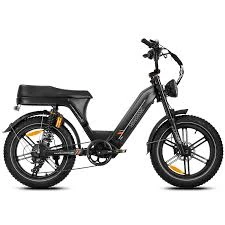
- Afrikaans
- Albanian
- Amharic
- Arabic
- Armenian
- Azerbaijani
- Basque
- Belarusian
- Bengali
- Bosnian
- Bulgarian
- Catalan
- Cebuano
- Corsican
- Croatian
- Czech
- Danish
- Dutch
- English
- Esperanto
- Estonian
- Finnish
- French
- Frisian
- Galician
- Georgian
- German
- Greek
- Gujarati
- Haitian Creole
- hausa
- hawaiian
- Hebrew
- Hindi
- Miao
- Hungarian
- Icelandic
- igbo
- Indonesian
- irish
- Italian
- Japanese
- Javanese
- Kannada
- kazakh
- Khmer
- Rwandese
- Korean
- Kurdish
- Kyrgyz
- Lao
- Latin
- Latvian
- Lithuanian
- Luxembourgish
- Macedonian
- Malgashi
- Malay
- Malayalam
- Maltese
- Maori
- Marathi
- Mongolian
- Myanmar
- Nepali
- Norwegian
- Norwegian
- Occitan
- Pashto
- Persian
- Polish
- Portuguese
- Punjabi
- Romanian
- Russian
- Samoan
- Scottish Gaelic
- Serbian
- Sesotho
- Shona
- Sindhi
- Sinhala
- Slovak
- Slovenian
- Somali
- Spanish
- Sundanese
- Swahili
- Swedish
- Tagalog
- Tajik
- Tamil
- Tatar
- Telugu
- Thai
- Turkish
- Turkmen
- Ukrainian
- Urdu
- Uighur
- Uzbek
- Vietnamese
- Welsh
- Bantu
- Yiddish
- Yoruba
- Zulu
Dec . 25, 2024 01:09 Back to list
Tips for Properly Adjusting Your Mountain Bike's Back Derailleur for Optimal Performance
How to Adjust the Back Derailleur on a Mountain Bike
Adjusting the back derailleur on a mountain bike is an essential skill for any cyclist. A well-tuned derailleur ensures smooth shifting, enhances bike performance, and prolongs the lifespan of your components. Whether you're dealing with a stubborn chain skip or you just want to improve your gear changes, this guide will help you master the adjustment process.
Understanding the Basics
Before diving into the adjustment itself, it's important to understand the parts of the derailleur system. The back derailleur consists of several key components the derailleur body, the jockey wheels (pulleys), the spring mechanism, and the limit screws. Each of these elements plays a crucial role in shifting performance.
1. Limit Screws These screws determine how far the derailleur can move in both the high (smallest cog) and low (largest cog) gear positions. 2. Cable Tension Proper cable tension is critical for responsive shifting. If the cable is too loose or too tight, it can lead to misalignment in shifting. 3. B-Screw This screw adjusts the distance between the jockey wheel and the cassette, helping to improve shifting performance, especially in larger cogs.
Tools You Will Need
To perform the adjustment, you need a few basic tools - A Phillips screwdriver (for limit screws) - A 5mm Allen wrench (for B-screw adjustments) - A chain checker (optional, for assessing chain wear) - A bike stand (optional, but helpful)
Step-by-Step Adjustment
how to adjust back derailleur on mountain bike

1. Inspect the Current Setup Start by placing your bike on a stand and inspecting the derailleur for any visible damage. Check the alignment of the derailleur hanger to ensure it is straight.
2. Check Cable Tension Shift into the highest gear (smallest rear cog) and observe how the derailleur responds. If you encounter any hesitation or difficulty, you may need to adjust the cable tension. To do this, locate the barrel adjuster on the derailleur or shifter. Turning it counterclockwise will increase tension, while turning it clockwise will decrease it.
3. Adjust the Limit Screws Shift into the highest gear. Identify the high limit screw (usually marked 'H') on the derailleur. When properly adjusted, the derailleur should be aligned with the smallest cog. If it's too far away or rubbing against the cog, turn the screw slightly until it aligns. Next, shift to the lowest gear and repeat the process with the low limit screw (marked 'L'), ensuring the derailleur clears the largest cog.
4. Set the B-Screw After adjusting the limit screws, focus on the B-screw, which controls the derailleur's distance from the cassette. With the chain on the largest cog, turn the B-screw until there is a slight gap between the jockey wheel and the cog—about 5 to 6 mm is ideal. This gap helps prevent shifting issues when under load.
5. Test Shifting After completing the adjustments, test the shifting through all gear combinations. Pay attention to any skipping or hesitation and adjust the cable tension as necessary. If shifting remains problematic, you may need to revisit the limit screws or B-screw.
6. Fine-Tuning Sometimes, fine-tuning is necessary after initial adjustments. Repeat the test and adjustments until you achieve smooth and precise shifting across all gears.
Conclusion
Adjusting the back derailleur on your mountain bike may seem daunting at first, but with practice, it becomes an invaluable skill. Regular maintenance of your derailleur ensures optimal performance, making your rides more enjoyable and efficient. Remember to inspect your bike frequently, especially before long rides or races. With this knowledge, you’re now equipped to tackle derailleur adjustments yourself, enhancing your cycling experience overall!
-
The Ultimate Kids' Four-Wheeler Experience
NewsJul.09,2025
-
The Ultimate Guide to Mountain Bikes: Gear Up for Your Ride
NewsJul.09,2025
-
The New Age of Cycling: Electric Bikes for Every Rider
NewsJul.09,2025
-
The Best Kids Bicycles: Ride in Style and Safety
NewsJul.09,2025
-
The Best 3-Wheel Scooters for Kids: Fun, Safety, and Adventure
NewsJul.09,2025
-
Revolutionize Your Ride: Affordable Electric Bikes
NewsJul.09,2025
-
Finding the Perfect Mountain Bike for Every Rider
NewsJul.09,2025



